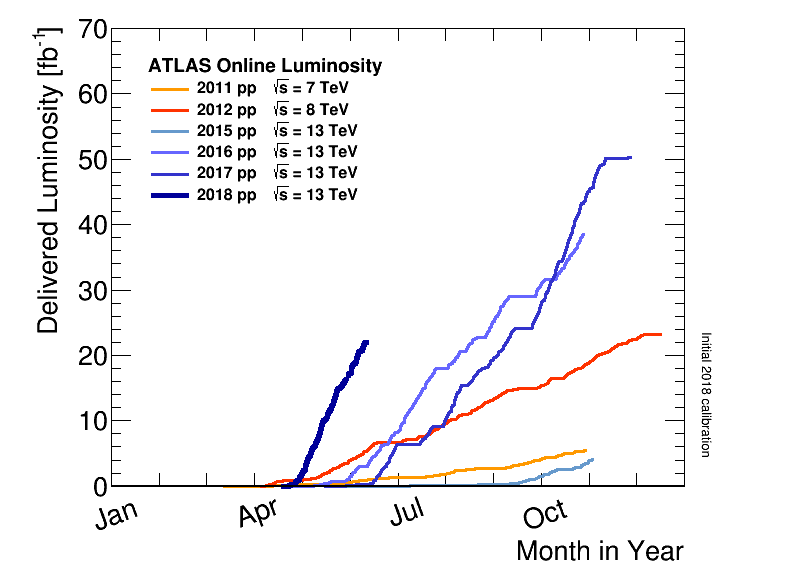The mad rush to the summer conferences is almost over, and while I am still trying to wrap up the research projects I’ve been working on for many months, I am thinking ahead to other projects that I’d like to start in the autumn. The BaBar experiment offers many opportunities to study the building blocks of the universe. My thoughts have, of late, turned to the many possibilities offered by the charm quark and the tau lepton. For many years, I’ve used both of these subatomic particles as a means to an end. I’ve use mesons from charm quarks to help constrain the decays of one B meson, so that I can then use the tau to study very rare final states of the other B meson. However, there are so many other possibilities with these under served subatomic particles.
In recent years, most of the new states of matter that have been discovered have been excited states of the charm quark when its paired with another quark. The tau, heaviest of the leptons, is like the Hadrian’s Wall of particle physics; what lies beyond is the wild unknown, the realms of the world yet unenclosed in the empire of our knowledge. The beauty of these two building blocks is that the collider at SLAC is a factory for them, just as much as it’s a factory for the b quark (its primary goal). For every 10 pairs of b quarks, we make 9 pairs of tau leptons and 13 pairs of charm quarks.
When I get started considering some potential new projects, I like to think about many things. The physics motivation is only part of it for me; that is, the (possibly shakey) theoretical motivation for doing the project in the first place. Does the project have implications for the Standard Model? Does it have implications for physics scenarios that lie beyond the Standard Model? If it only has relevance to the Standard Model, is it still interesting? Many people prize this part of the thinking above all others. In other words, if it’s not interesting to theorists then it’s not going to be read about when its published, and therefore not worth doing. I think this is narrow-minded. Why should experimentalists not be free to play around with an interesting project, just because theorists fall asleep when the topic is mentioned? Should we really be beholden to the “sexy topic whimsy” of theorists?
I’m being a bit extreme here, but only in response to what sometimes seems like the opposite extreme in my experimental colleagues. The other part of my thinking is to look ahead to the analysis itself. How will I reconstruct the decays of the subatomic particles? Are there new uses for old kinematic variables, discriminants based on momentum and energy, that can be applied here? Are there new variables that I could develop that would be the real killer, the thing that will really discriminate between the target process and the possible backgrounds? What are the backgrounds? Are there processes that are easily removed? Are there processes that are so similar to the target final state as to be “irreducible” – that is, impossible to remove, no matter how smart you are?
I’ve spent part of my weekend mulling over these things for the charm quark and the tau lepton. Consequently, my dreams have been filled with lists of numbers, lists of final states, the kinematics of backgrounds. The character, Charlie, from TV’s “Numb3rs” sees the math in real-time, as he’s thinking about a problem or is presented with another topic that suddenly has relevance to his problem. I dream about it. I woke up twice this morning, realizing my last thoughts were about lists of numbers and decay modes streaming past my eyes.
This is not an uncommon phenomenon. To me, it signals a mental obsession with a problem, something my brain wants to chew on at night. Sometimes I event wake up with new ideas. Sometimes I just feel like shit in the morning because I’ve been dreaming about taus. If you want to learn more about this phenomenon, check out the Radiolab special on sleep [1].


